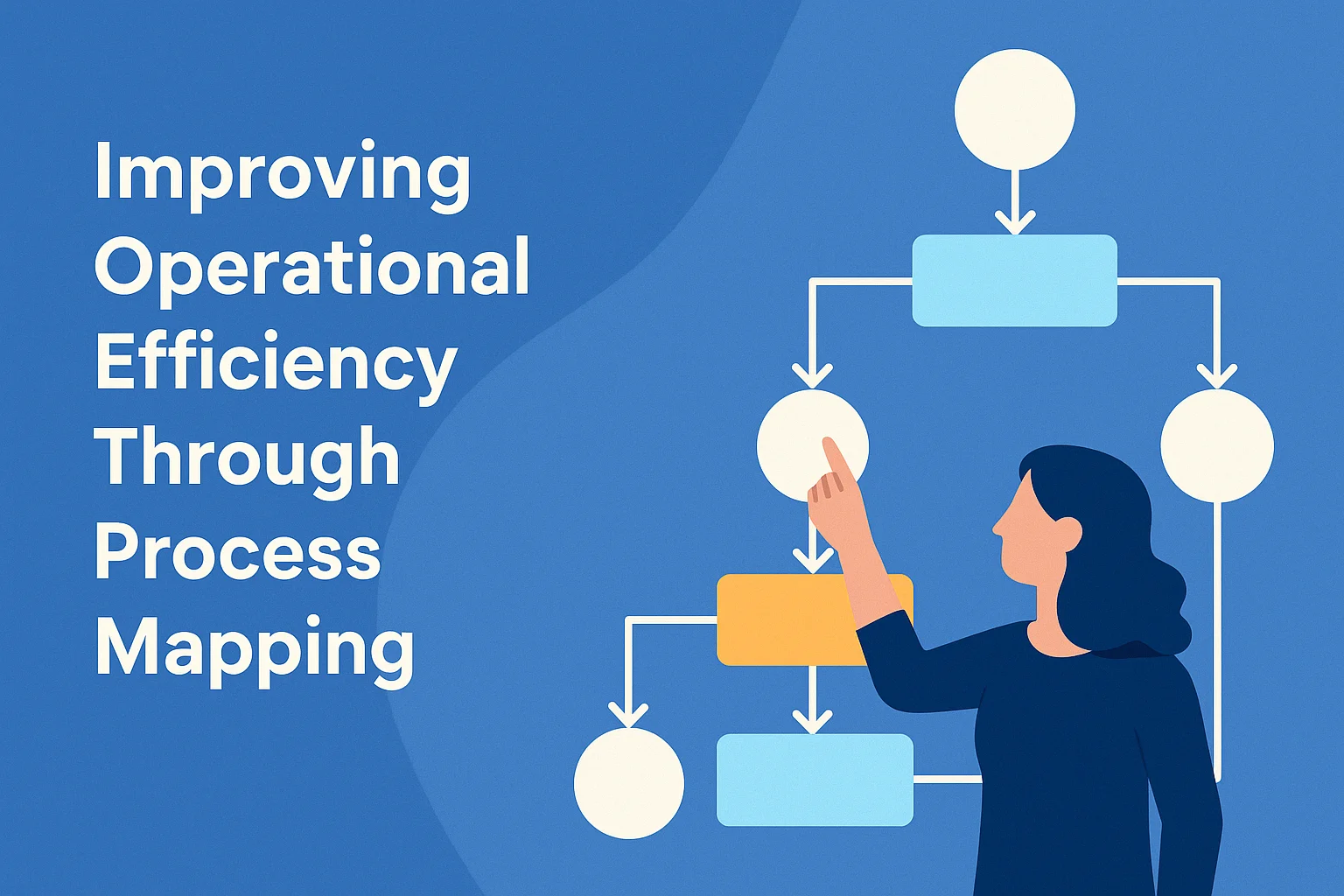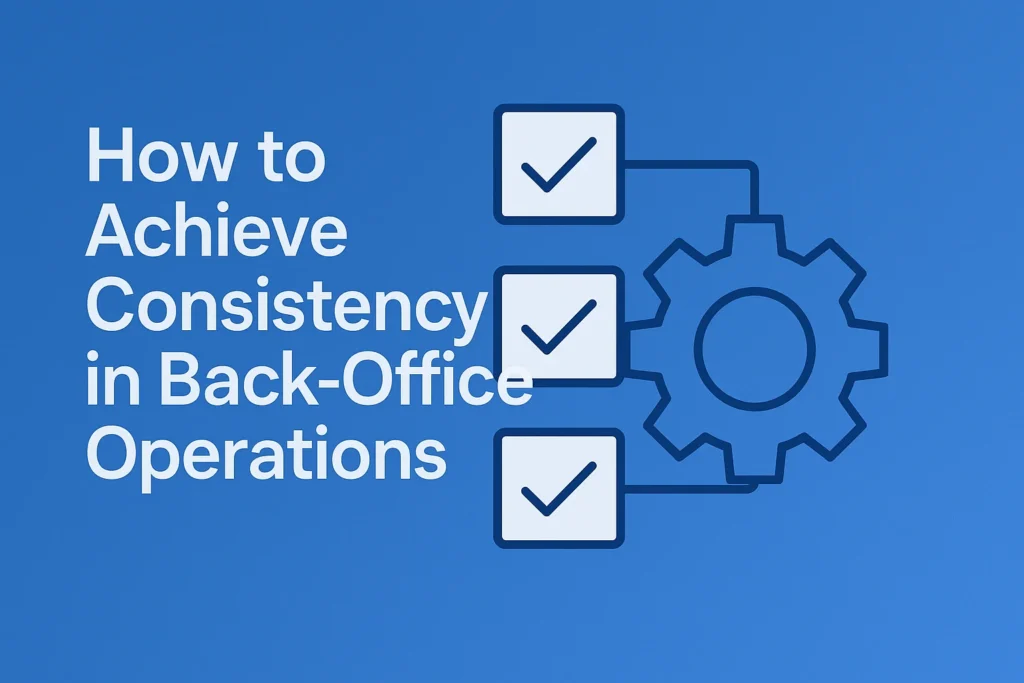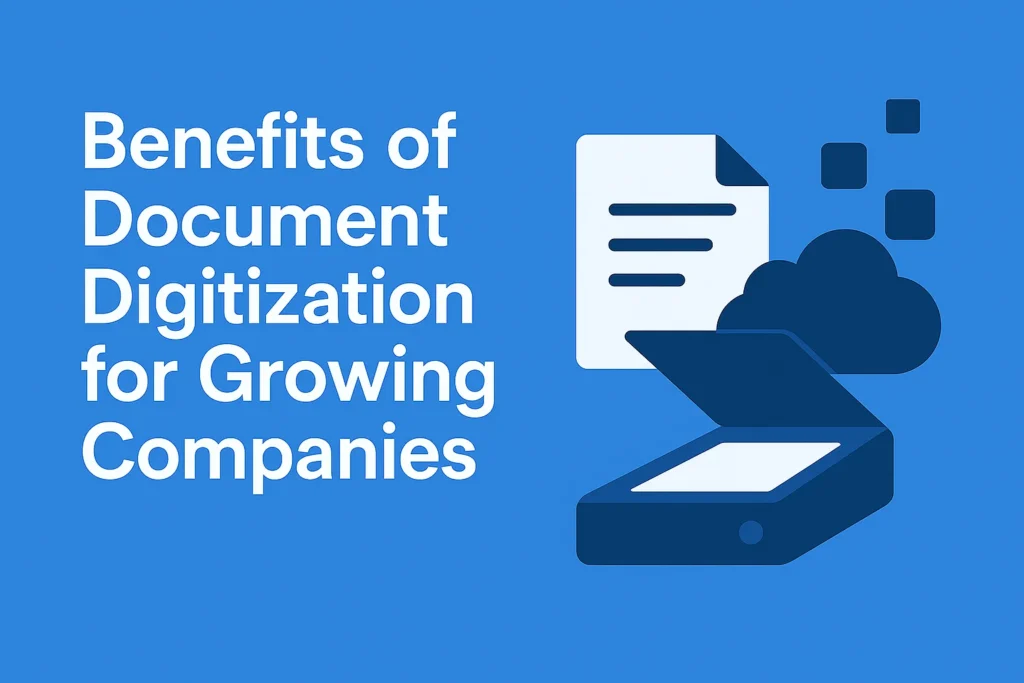Process mapping is one of the most powerful tools for operational improvement. By visually documenting workflows, you can spot bottlenecks, remove waste, and create smoother processes. This article shows how process mapping boosts efficiency across your business.
Why Process Mapping Works
- Makes workflows transparent
- Exposes duplication and inefficiencies
- Encourages collaboration
- Supports training and onboarding
Steps to Effective Process Mapping
1
Define Objectives
What problem are you trying to solve? Identify a clear scope.
2
Involve Stakeholders
Gather input from people directly performing the tasks to capture reality, not assumptions.
3
Map the Current State
Use flowcharts, swimlanes, or value stream maps to document each step.
4
Identify Pain Points
Look for delays, rework, approvals, and redundant steps.
5
Design the Future State
Simplify, automate, or eliminate unnecessary steps and document the improved flow.
5
Implement and Review
Roll out changes and monitor metrics to ensure improvements stick.
Benefits of Process Mapping
- Faster turnaround times
- Lower costs
- Improved compliance
- Better quality control
Conclusion
Process mapping creates a shared understanding of how work gets done — and how it can get better. It is a proven approach to drive sustainable efficiency.



